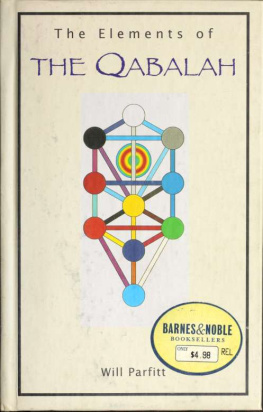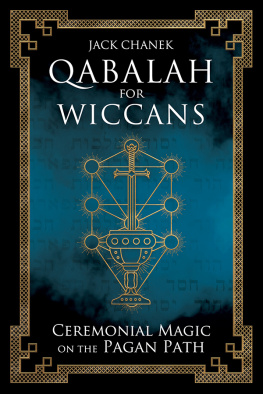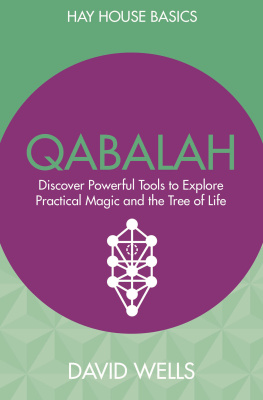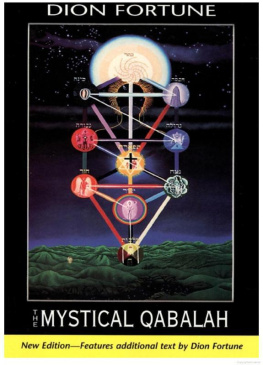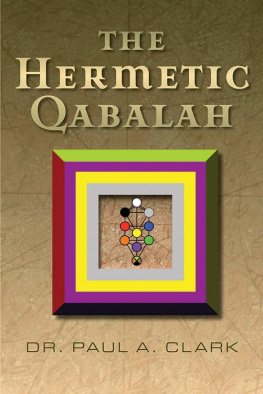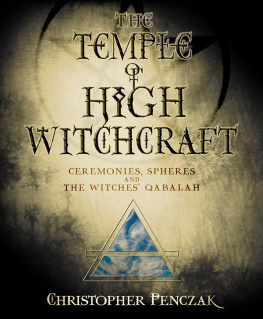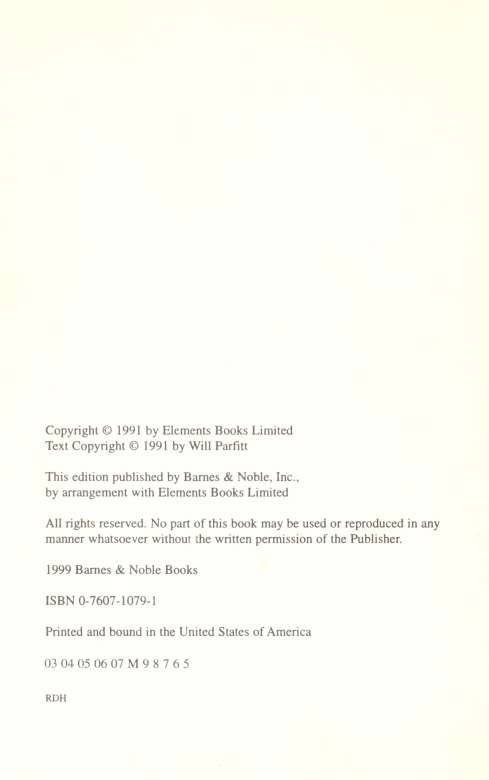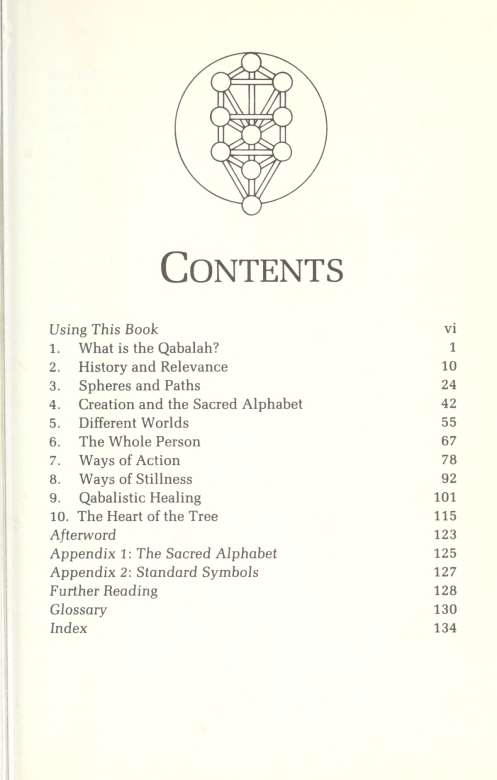This book made available by the Internet Archive.
Using This Book
Each chapter of The Elements of the Qahalah contains the main text introducing the subject of that chapter followed by an exercise, which gives you the opportunity to connect with the Qabalah in an experiential way. The exercises are placed at the end of the chapter so that you can have greater choice as to how and when you practise them. You might like to do so immediately after reading the chapter, or you may prefer to leave them until you are feeling more in the mood. If you are reading this book whilst travelling, for example, you may prefer to wait until you are at home before attempting an exercise.
Before starting any of the exercises, ensure you have enough time to complete the exercise without being disturbed. Spend a few moments relaxing and centring yourself. Take up a comfortable position, either standing, sitting or lying as appropriate to the exercise, and with a straight but not stiff spine, close your eyes and take a few deep breaths. Be aware that you are a unique individual choosing at this time to perform this exercise. You are then ready to start the exercise. Take your time going through the instructions to the exercise - it is better to err on the side of slowness rather than rush things.
It may be necessary to read the exercise through a few times to familiarize yourself with what you have to do. This will help you to focus, so do not begrudge this time. If you find
any particular exercise especially useful or meaningful to you, you can always repeat it more than once. Repetition of an exercise can, in fact, multiply its power in helping you realize more about yourself.
You might like to share the experience of the exercises with someone else, each of you alternately acting as guide and speaking the words and directions for the other person. If you do this, remember to respect the other person's process, and to speak slowly and distinctly, allowing him or her time to do whatever is required.
It is a good idea to keep a record of your work with the Tree of Life in a diary or workbook as, apart from anything else, it helps you to ground your experience. This simply means finding ways of expressing what you have learnt in your everyday life. The exercise at the end of Chapter 2 may make having a diary in which to record your Qabalistic work more real for you. Mostly, however, have fun with the exercises -taking a light approach can help you both connect with the work and keep a perspective on it.
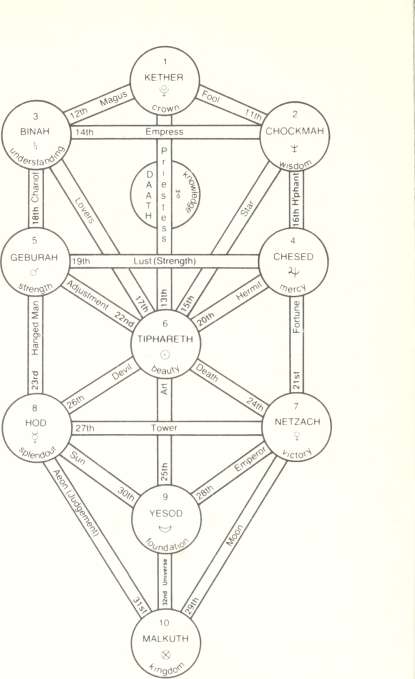
Diagram 1 The Tree of Life
1 What is the Qabalah?
She is more precious than pearis; and aJJ the things you value are not equaJ unto her. Length of days is in her right hand; in her left are riches and honour. Her ways are ways of pleasantness, and alJ her paths are peace. A tree of life is she to those that lay hold of her; and every one that firmly grasps her will be made happy.
King Solomon [Book of Proverbs)
The Qabalah, at the heart of the Western Mystery Tradition, is a way of personal development and self-realization based on a map of consciousness called the Tree of Life. It is a constant inspiration to seekers after inner vcrisdom, whatever their religion or belief. The Qabalah emphasizes the relevance of our ordinary, daily lives as an expression of our spirituality. It offers us a detailed, coherent world view, both of the nature of human existence and the relationship between ourselves, other beings, our planet and even the universe as a whole.
For many years the Qabalah appeared to be lost in obscurity, particularly in its practical applications, yet today, with so many people searching for spiritual roots, and looking for meaning and purpose in their lives, it is undergoing a remarkable come-back. Its influence has not only been in the spiritual realms, however, for it has also exerted a
The Elements of the Qabalah
profound and lasting effect on the growth of modern Western Psychology. Although he kept it secret, we now know that Freud was interested in the Qabalah, and in his letters Jung made many knowledgeable references to the Tree of Life.
The Hebrew word Qabalah means 'to reveal', and it refers to the revelation of our own inner nature that can come from its study and use. The Qabalistic diagram known as the Tree of Life is a guide to the body, personality, soul and Spirit. It encompasses a philosophy and psychology of great theoretical and practical depth that deals with the whole person, not just the intellect, and it has been called 'the Mysticism of the West'.
The word Qabalah also means 'to receive', referring to our ability to receive inner wisdom and understanding. A distinction is made between 'knowledge', which is primarily theoretical, and 'understanding', which is primarily practical. Nothing can replace the experience of the Qabalah in its practical applications. To appreciate this fully, we have to engage all aspects of our being - our thinking, feeling and sensing functions - and not just the intellect.
The Qabalah can be divided into five parts. Firstly, there is the 'oral' Qabalah, aspects of the teaching received orally, either from a teacher of some kind or from another traveller on the journey of self-development. In fact, once we start using the Qabalah practically, it is quite amazing how even chance remarks made by other people can offer us meaningful and timely insights into our own nature. Secondly, there is the 'written' Qabalah which traditionally aims to describe the structure and nature of the universe. Thirdly, there is the 'literal' Qabalah which is concerned with the decoding of information within Qabalistic texts, particularly the Bible. In later chapters of this book, we will see how, from a Qabalistic viewpoint, the Bible reads very differently from the orthodox Jewish or Christian viewpoints.
The fourth division is called the 'symbolic' Qabalah and is concerned with the understanding and integration of our own experiences in life, where everything with which we relate is viewed as a symbolic representation of something deeper. The symbolic Qabalah is primarily based on the Tree of Life
What is the Qabalah?
diagram. Finally, the fifth division is called the 'practical' Qabalah and is concerned with the utilization of all the various aspects of the Qabalah to promote evolution and to create changes on all levels.
As well as being a system of personal development and self-realization, the Qabalah, more particularly, can be seen as:
- a map of levels of awareness and energy
- a means for the correlation and expression of experience

